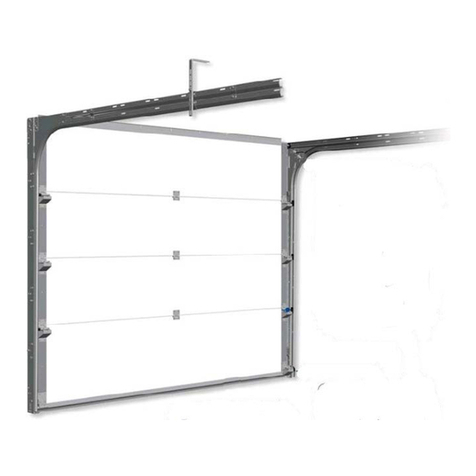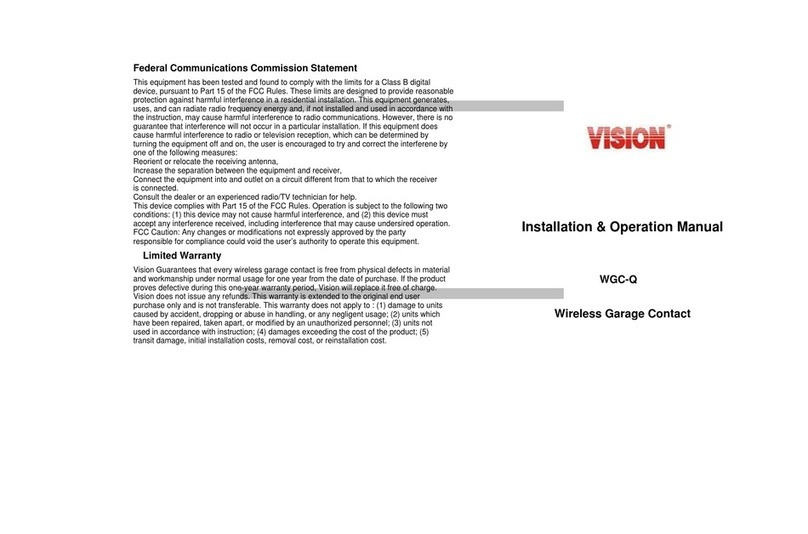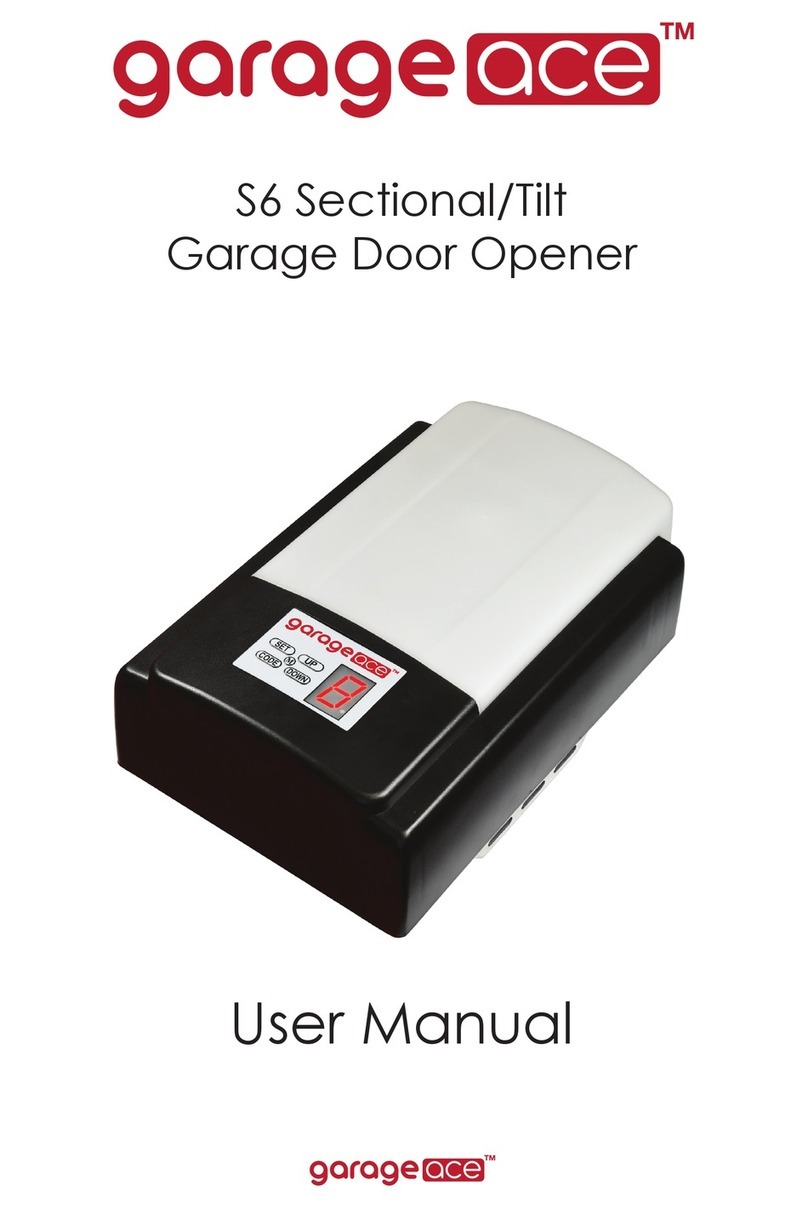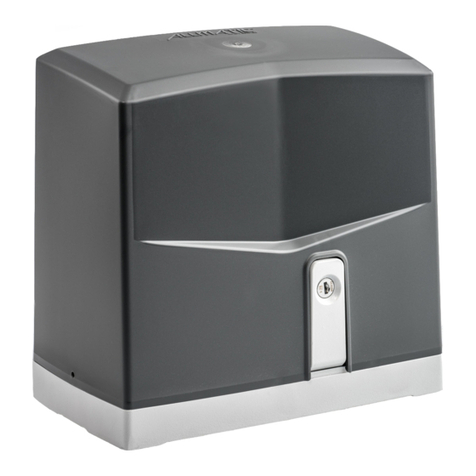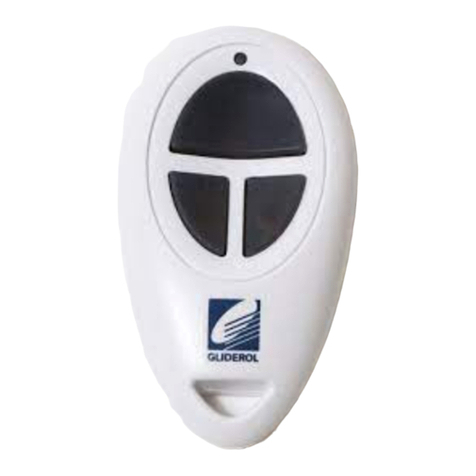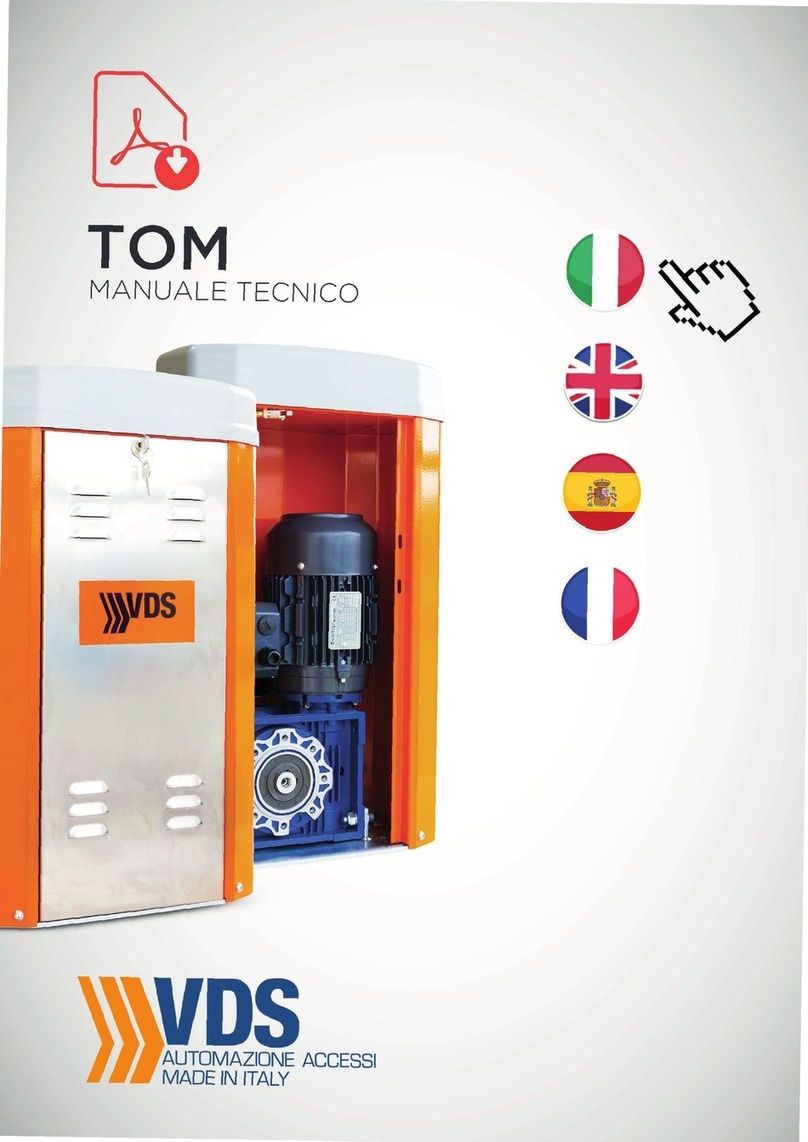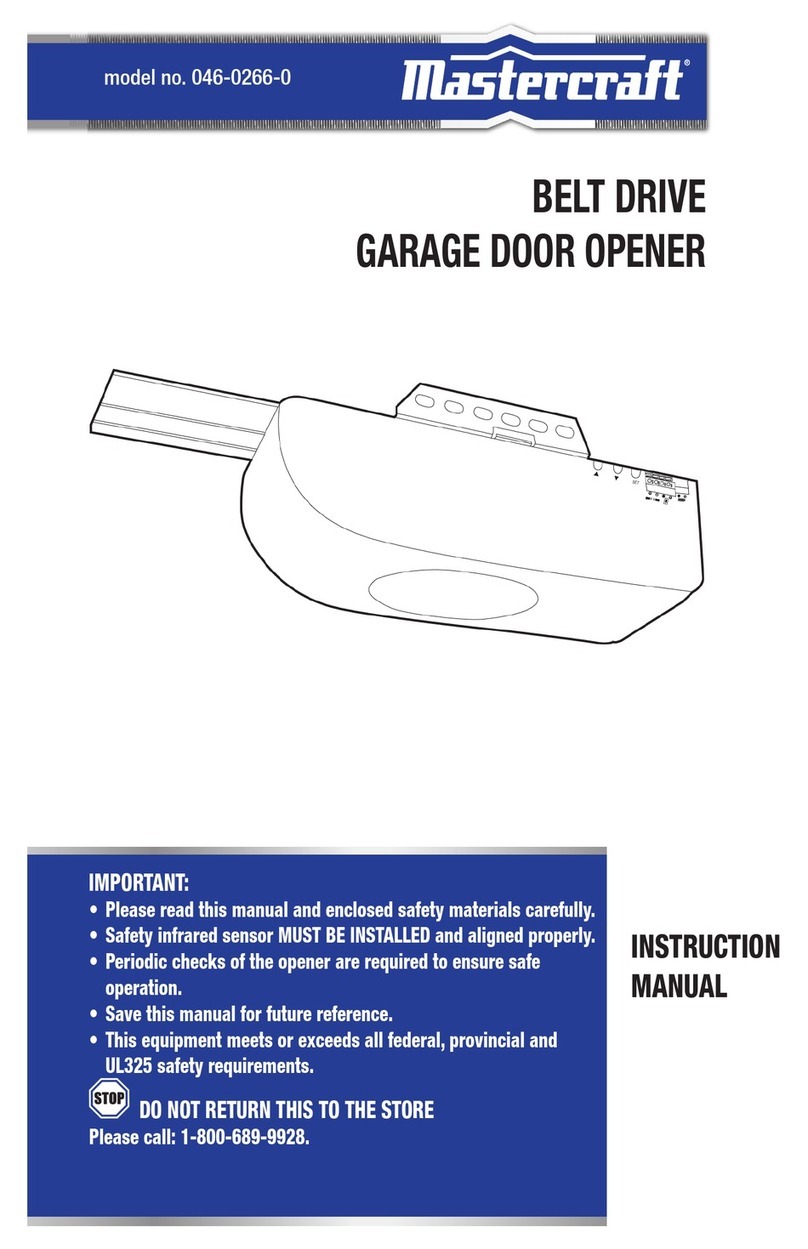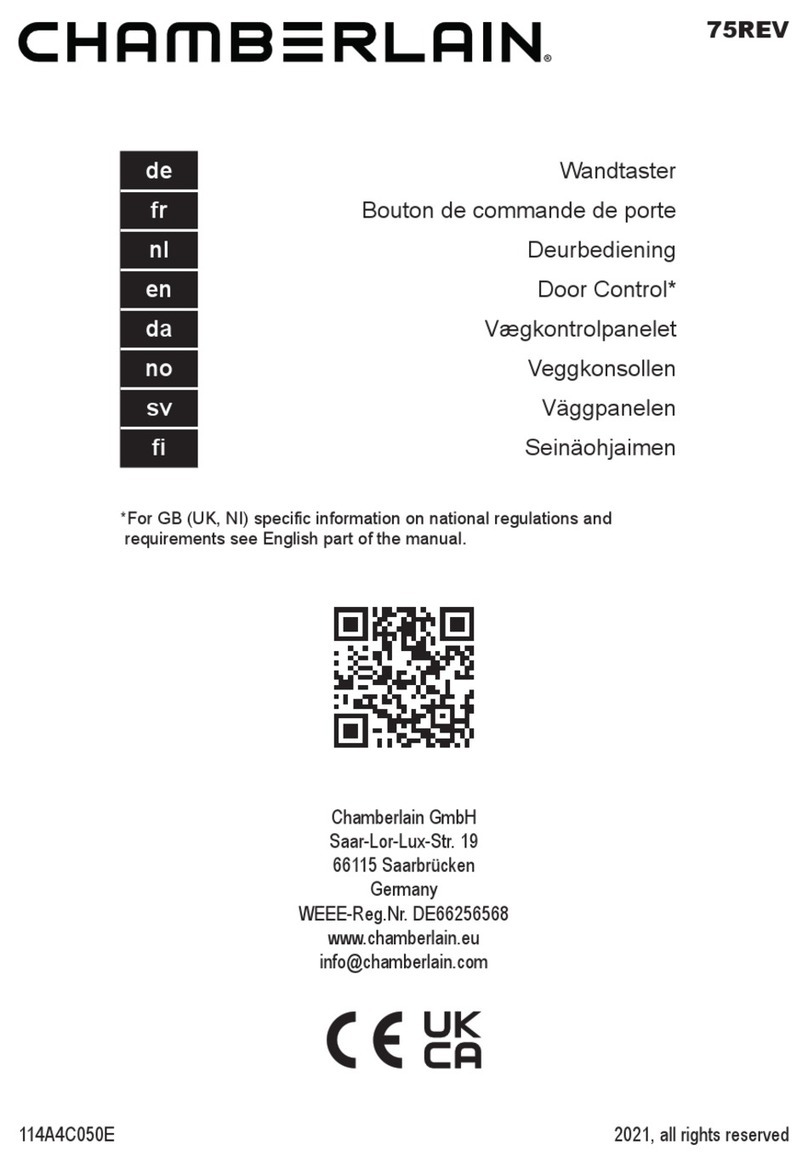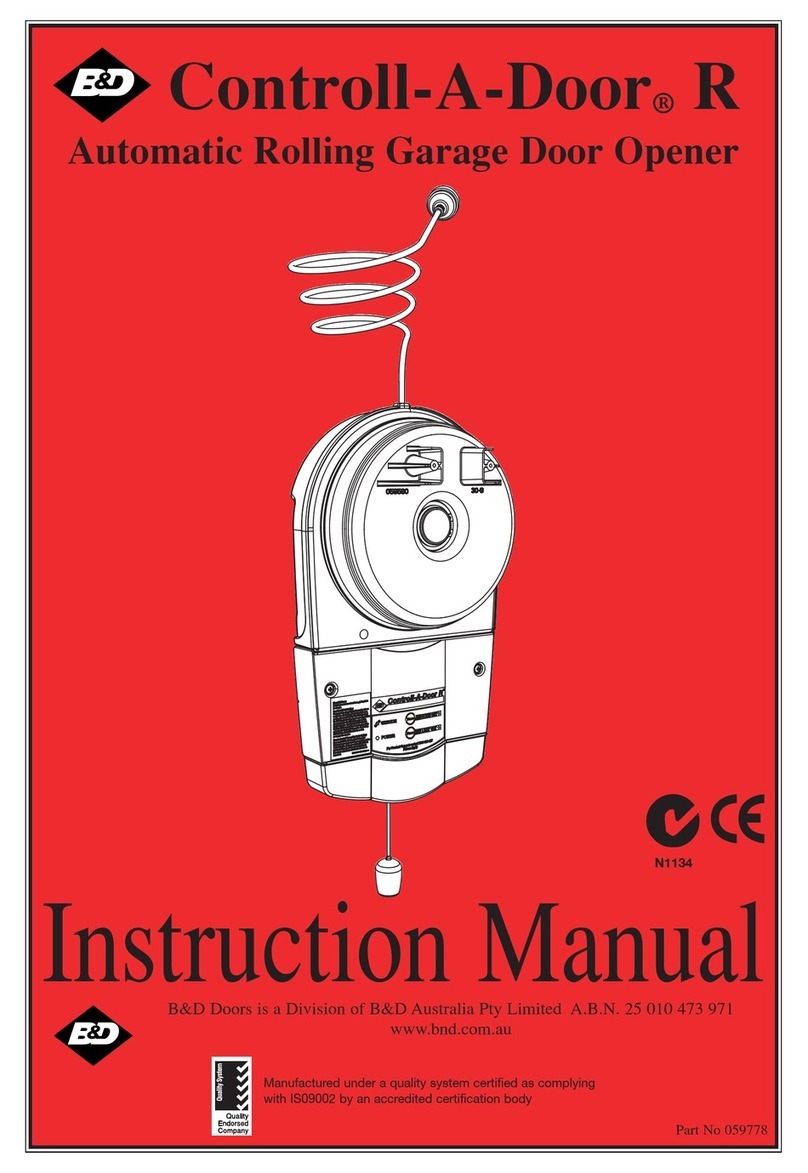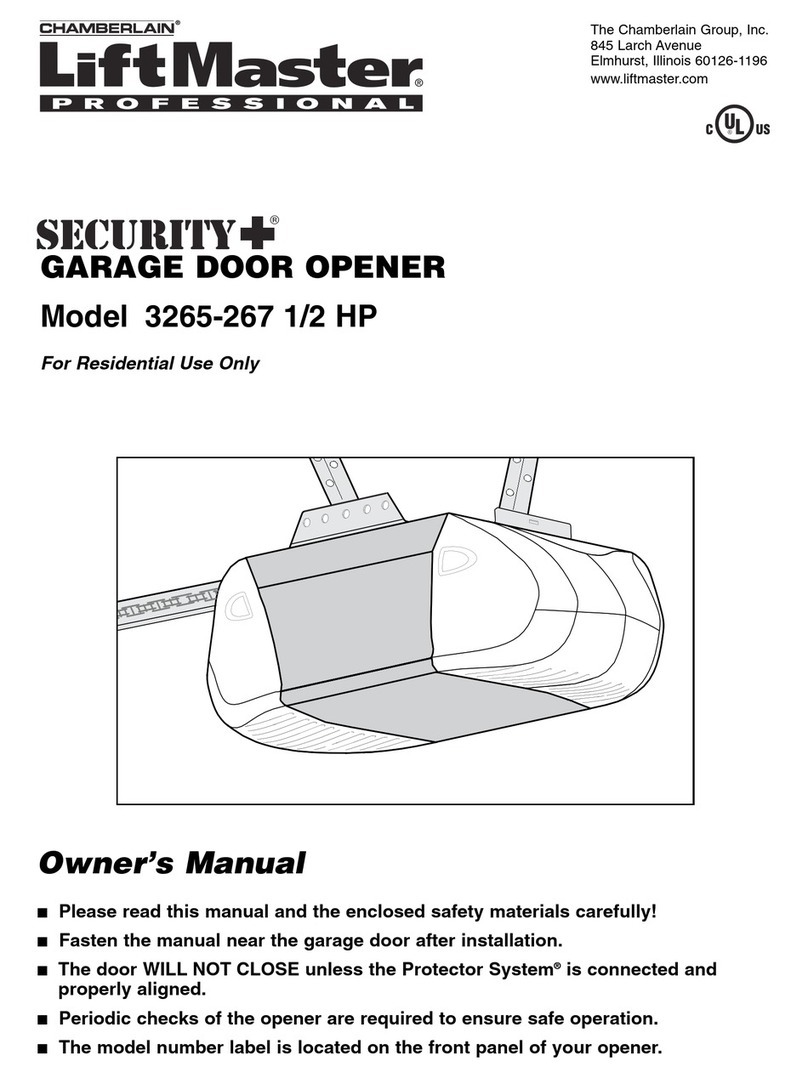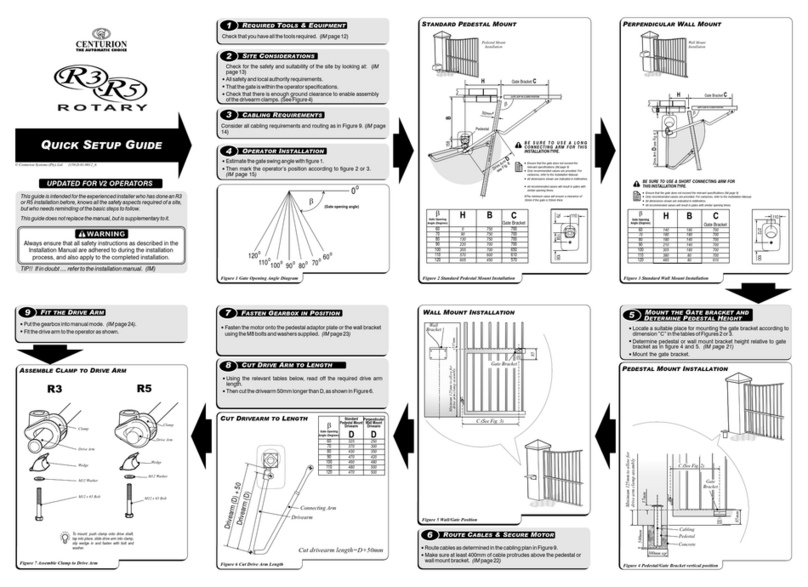idomus IDO PRO (HL) Manual

Montavimo, eksploatavimo, techninės priežiūros
ir išmontavimo instrukcija
Mounting, Operation, Technical Maintenance
and Dismantling Instruction
LT
EN
IDO PRO (HL)

2
Gerb. Kliente, Dėkojame, kad įsigijote mūsų fi rmos
produktą. Užtikriname Jus, kad teisingai eksploatuojami vartai
tarnaus ilgai ir nepriekaištingai.
TURINYS
1. Apie šią instrukciją
1.1 Ženklinimas
2. Saugos nurodymai
3. Montavimas
4. Eksploatacija ir aplinkos sąlygos
4.1 Valymas
4.2 Valdymas
5. Vartų priežiūra ir techninis aptarnavimas
6. Sutrikimai ir pažeidimų šalinimas
7. Vartų išmontavimas
8. Dokumentacija
9. Šalinimas
1. APIE ŠIĄ INSTRUKCIJĄ
Ši instrukcija buvo parengta pagal EB direktyvą 2006/42/EB. Šioje
instrukcijoje pateikiami vartų IDO - PRO (HL) montavimo,
eksploatavimo, priežiūros ir išmontavimo nurodymai. Atidžiai
perskaitykite šią instrukciją ir laikykitės visų jos nurodymų. Joje
pateikiama svarbi informacija apie gaminį. Ypač laikykitės saugos
bei įspėjamųjų nurodymų. Kilus abejonėms dėl montavimo ir (arba)
priežiūros, susisiekite su UAB IDOMUS.
Ši instrukcija gali būti papildyta kitomis instrukcijomis, pavyzdžiui,
praėjimo durelių ar automatinės elektrinės pavaros montavimo
instrukcija (jei taikytina).
Visi matmenys pateikti milimetrais, išskyrus tuos atvejus, kai
nurodyta kitaip.
Po vartų sumontavimo, įsitikinkite, kad vartų ženklinimo CE lipdukas
yra užpildytas ir tvirtai priklijuotas ant vartų.
Laikykite šią instrukciją saugioje vietoje, netoli vartų.
Dėl nuolatinio gaminių tobulinimo galimi techniniai pakeitimai.
1.1 Ženklinimas
2. SAUGOS NURODYMAI
- Segmentinių garažo vartų montavimą, techninę priežiūrą, remontą
bei išmontavimą privalo atlikti tik kvalifi kuotas specialistas
(kompetentingas asmuo pagal EN 12635).
- Atsiradus vartų sutrikimams (jei eiga sunki arba jei yra kitų
sutrikimų), jų tikrinimui ir remontui privaloma kreiptis į kvalifi kuotą
specialistą.
- Kvalifi kuotas specialistas privalo laikytis nacionalinių darbų saugos
teisės aktų. Atliekant montavimo darbus, būtina atkreipti dėmesį į
galimas grėsmes, apibrėžtas EN 12604 ir EN 12453.
- Prieš pradedant eksploatuoti vartus, būtina patikrinti,
ar vartai yra nepriekaištingos mechaninės būklės ir ar išlaikyta vartų
pusiausvyra, kad juos būtų galima lengvai valdyti rankomis (kaip to
reikalauja EN 12604). Neeksploatuokite vartų, jei matomi akivaizdūs
pažeidimai.
- Segmentinių vartų IDO-PRO (HL) naudojimo sritis nustatyta EN
13241-1.
3. MONTAVIMAS
Prieš pradedant montavimo darbus, įdėmiai perskaitykite visus
įspėjimus ir nurodymus šioje instrukcijoje tam, kad būtų išvengta
bet kokių asmens sužalojimų. Montavimo darbus atlikite tik šioje
instrukcijoje nurodyta tarka, prieš tai atsižvelgdami šiuos punktus:
• Prieš montuojant vartus, patikrinkite ar tinkamai parengta
vartų anga ir pastato grindys, yra pakankamai šviesos;
• Įsitikinkite, kad elektros energija yra išjungta, kol bus
vykdomi elektros darbai;
• Montavimo darbų vietą pažymėkite ryškia juosta, kad kiti
asmenys laikytųsi saugaus atstumo;
• Atsižvelgdami į statybos ypatumus, patikrinkite kartu
tiekiamų tvirtinimo detalių tinkamumą, turi būti užtikrinta vartų
konstrukcijos saugi jungtis su statinio siena;
• Montuojant, išmontuojant, remontuojant vartus, atliekant
visus gręžimo/ pjovimo darbus, dėvėkite apsaugines pirštines,
apsauginius batus bei ainius (kai kurių dalių kraštai gali būti aštrūs);
• Papildomų dalių pridėjimas arba nepilnas vartų surinkimas
gali pakenkti vartų veikimui ir saugumui (draudžiama tvirtinti
papildomas kitų gamintojų
• Visi detalių surinkimo nurodymai šioje instrukcijoje yra
pavaizduoti iš vidinės pusės, nebent yra nurodyta kitaip;
Naudokite tik darbui tinkamus įrankius;•
• Pasirūpinkite tinkamu pastato vėdinimu ir džiovinimu, kad
būtų įrengtas tinkamas vandens nuotakas grindyse, nes kitaip kyla
korozijos pavojus;
• Prieš pradedant tinkavimo, dažymo, valymo darbus,
pasirūpinkite, kad vartai būtų tinkamai apsaugoti, nes gipsas,
cementas, kalkės, dažai ir kt. statybinės medžiagos gali sugadinti
vartų paviršių.
Vadovaukitės montavimo seka, nurodyta 6 - 22puslapiuose.
VARTŲ SPYRUOKLIŲ ĮTEMPIMAS
Spyruoklės yra veikiamos didelio sukimo momento, todėl
būtina pasirūpinti jų saugiu įtempimu, kad nebūtumėte sužaloti! Prieš
įtempiant spyruokles, privaloma užfi ksuoti vartų plokštumą.
Ant vartų CE lipduko yra nurodomos apytikrės reikšmės spyruoklių
įtempimo apsukų. Esant tinkamam spyruoklių įtempimui vartų
plokštuma sustoja ją kilstelėjus į viršų. Vykdant techninį aptarnavimą
būtina patikrinti spyruoklių įtempimą ir jeigu reikia, jas patempti
papildomai.
4. EKSPLOATACIJA IR APLINKOS SĄLYGOS
Vartotojui:
- Pasirūpinkite tinkamu pastato džiovinimu arba vėdinimu, priešingu
atveju atsiranda korozijos pavojus;
- Prieš pradedant tinkavimo, dažymo darbus, pasirūpinkite tinkama
vartų apsauga, kadangi cementas, gipsas ir kitos statybinės
medžiagos gali sugadinti vartų paviršių;
- Apsaugokite vartus nuo agresyvių ir ėsdinančių medžiagų (barstomoji
druska, rūgštys, šarmai, kalkės, besiskverbianti iš plytų kalio salietra),
kadangi jos agresyviai veikia vartų paviršių ir sandarinimo medžiagas
bei sukelia korozijos pavojų
- Apsauginę plėvelę nuo vartų būtina nuplėšti per 30 dienų po vartų
sumontavimo (šis nurodymas negalioja dažytiems vartams).
Vartai skirti naudoti šiomis sąlygomis:
- Maksimalūs temperatūros svyravimai lauke*: nuo -20 C0 iki +50 C0;
- Santykinė oro drėgmė 20 – 90 %;
*Dideli temperatūros svyravimai viduje ir išorėje gali sukelti
segmentų paviršiaus defektų (bimetalinis efektas) , ypač tai galioja
tamsių spalvų segmentams, todėl rekomenduojame jų vengti.
Paviršiaus priežiūra turėtų būti atliekama naudojantis šia instrukcija
tam, kad būtų išvengta defektų rizikos.
- Pavojinga/svarbu;
- Rankinis valdymas;
- Papildomos instrukcijos.
LT
- Buitinė automatika;
- Pramoninė automatika/
Grandininė pavara.
2

3
4.1. Valymas
Siekiant išlaikyti paviršiaus kokybę, paviršių valykite reguliariai ir
ne rečiau kaip kas tris mėnesius (išorinę vartų pusę ir sandarinimo
tarpines). Valymui ir priežiūrai pakanka švaraus vandens. Esant
didesniam užterštumui, valymui naudokite šiltą vandenį ir
neutralias, nešveičiančias valymo priemones (buitinį
ploviklį, pH 7). Turi būti užtikrintas šoninių sandarinimo tarpinių
lengvas slydimas, todėl jų slydimo sritį būtina valyti nuolat ir sutepti
PTFE tepalu. Išsamesnę informaciją apie vartų valymą rasite
„Vartotojo instrukcijoje“.
4.2 Valdymas
Vartus valdyti privalo tik instruktuoti asmenys. Išsami segmentinių
vartų valdymo ir priežiūros instrukcija aprašyta „Vartotojo
instrukcijoje“, kuri pateikiama kartu su segmentiniais garažo vartais
jų savininkui.
• Vartus naudokite tik tada, kai jų eigos kelyje nėra kliūčių,
negalima stovėti ar vaikščioti po judančiais vartais (pašalinkite visus
vartų plote esančius daiktus);
• Atidarinėkite ir uždarinėkite vartus tik su kartu tiekiamais
valdymo elementais (virvė arba automatinė pavara, rankena);
• Jei vartai komplektuojami su automatine pavara, vartų
spyna privalo būti nuimta;
• Eksploatacijos metu išaiškėjus vartų atskirų dalių
defektams (ėmė trūkinėti pakėlimo trosų vijos, nusilpo spyruoklių
įtempimas, jei vartai sunkiai kilnojasi, jei kėlimo/ nuleidimo metu
girdimi pašaliniai garsai ir pan.) kreipkitės į įmonę, sumontavusią
vartus, kad atliktų garantinį ar po garantinį aptarnavimą;
• Suveikus apsaugai nuo trosų trūkimo arba spyruoklių
lūžimo, nedelsdami kreipkitės į įmonę, sumontavusią vartus;
• Niekada patys nekeiskite vartų konstrukcijos ir
nenuiminėkite detalių.
5. VARTŲ PRIEŽIŪRA IR TECHNINIS APTARNAVIMAS
Vartų priežiūrą privalo atlikti tik kvalifi kuotas specialistas.
Vartai turi būti reguliariai prižiūrimi ir tikrinami nuo pirmo jų paleidimo
ir ne rečiau kaip kartą per metus. Tikrinimo ir techninio aptarnavimo,
remonto darbai turi būti fi ksuojami raštu ir saugomi vartų pase visu
gaminio eksploatacijos laikotarpiu.
Vartų spyruoklės, trosai ir apatiniai ratukų laikikliai
yra veikiami didelio įtempimo ir sukimo momento, todėl prieš
juos keisdami ar tikrindami, apsaugokite vartų plokštumą nuo
nekontroliuojamų judesių. Pažeisti trosai ir spyruoklės kelia pavojų
susižaloti, todėl jie turi būti nuolatos tikrinami.
Iškart po vartų montavimo:
• Patikrinkite ar vartai lengvai darinėjasi, vartams esant
uždarytiems, ratukai turi lengvai suktis. Jeigu reikia, sureguliuokite
ratukus;
• Patikrinkite ar tinkamai išlygintas plokštumos svoris:
rankiniu būdu atidarykite vartus iki pusės aukščio. Šioje padėtyje
vartai turi užsifi ksuoti (jeigu vartai nesifi ksuoja ir leidžiasi žemyn,
patempkite spyruokles);
• Patikrinkite ir prireikus priveržkite visus tvirtinimo taškus
tiek ant vartų, tiek ant pastato sienos;
• Sutepkite vartų bėgius, guolius ir ratukų laikiklius, vidurinių
ir kraštinių vyrių kniedes (Patarimas: PTFE tepalu);
• Sutepkite tarpines (Patarimas: specialiu gumos tepalu arba
vazelinu).
Po 3 mėnesių:
Patikrinkite balansavimo sistemą, įtempkite/atpalaiduokite •
spyruokles;
• Atlikite išsamią apžiūrą, kaip ir iš kart po vartų sumontavimo
prieš juos paleidžiant veikimui.
Kas 6 mėnesius arba kaskart po 750 ciklų:
• Patikrinkite ar nėra pažeidimų, įtrūkimų ar susidėvėjimo
ženklų šoninėse, viršutinėse ir apatinėse tarpinėse;
• Atlikite išsamią apžiūrą, kaip ir iš kart po vartų sumontavimo
prieš juos paleidžiant veikimui;
• Sutepkite vartų bėgius, guolius ir ratukų laikiklius, vidurinių
ir kraštinių vyrių kniedes (Patarimas: PTFE tepalu); 3.
• Sutepkite tarpines (Patarimas: specialiu gumos tepalu arba
vazelinu);
• Nuvalykite segmentus, nenaudokite šiurkščių valiklių
(Patarimas: vanduo);
Nuvaškuokite segmentus (Patarimas: automobilių vaškas);•
• Pašalinkite purvą nuo vartų ir aplink juos.
Kas 12 mėnesių arba kaskart po 1500 ciklų:
Patikrinkite, ar nesusidėvėjo trosai, apatiniai laikikliai; •
•
•
•
•
•
•
•
Patikrinkite vartų balansavimą ir sureguliuokite jei reikia;
Patikrinkite, ar nesusidėvėjo ir ar nėra pažeisti vyriai;
Patikrinkite, ar nesusidėvėjo ir ar nėra pažeisti skriemuliai;
Patikrinkite ar nesusidėvėjo ir ar nėra pažeisti ratukai;
Patikrinkite spyruoklių tvirtinimus;
Patikrinkite vartų plokštumos uždarymo jėgą;
Atlikite išsamią apžiūrą, kaip ir iš kart po vartų sumontavimo
prieš juos paleidžiant veikimui;
• Patikrinkite, ar nesusidėvėjo ir nėra pažeistos šoninės,
apatinės ir viršutinės tarpinės;
• Patikrinkite, ar nesusidėvėjo ir ar nėra pažeisti vartų
segmentai.
6. SUTRIKIMAI IR PAŽEIDIMŲ ŠALINIMAS
Atsiradus vartų sutrikimams, pažeidimams (vartų eiga sunki arba yra
pažeistų detalių), kreipkitės į kvalifi kuotą specialistą. Tokius vartus
draudžiama eksploatuoti!
Dėl nekontroliuojamų vartų plokštumos judesių (ypač lūžus spyruoklei
ir suveikus apsaugos mechanizmui) gali būti sužeisti žmonės arba
daiktai.
IDO-PRO vartai komplektuojami su spyruoklių apsaugos
mechanizmais, kurie suveikia trūkus spyruoklei.
7. VARTŲ IŠMONTAVIMAS
Vartų išmontavimas atliekamas atbuline tvarka nei surinkimas
(laikantis šios montavimo instrukcijos, priešinga nei nurodyta seka),
tų pačių reikalavimų, bei naudojant tas pačias saugos priemones.
Vartų išmontavimą privalo atlikti kvalifi kuotas specialistas.
8. DOKUMENTACIJA
Galutiniam vartotojui (vartų savininkui) po vartų sumontavimo
privaloma pateikti šiuos dokumentus (kurie turi būti saugomi
vartotojo visą vartų eksploatacijos laikotarpį):
• Vartų montavimo instrukcija (ši instrukcija, kurioje yra
nuorodos į vartų sumontavimą, išmontavimą ir techninę priežiūrą);
Vartotojo instrukcija. Vartų pasas;•
•
•
Eksploatacinių savybių deklaracija;
Atitikties deklaracija (vartams, valdomiems elektrine
pavara);
Iškart po vartų sumontavimo, kvalifi kuotas specialistas, kuris
sumontavo vartus, privalo supažindinti vartotoją su šiais dokumentais
ir jų turiniu, taip pat apmokyti kaip valdyti vartus ir kaip elgtis esant
vartų gedimams.
9. ŠALINIMAS Gaminio pakuotę ir panaudotas
detales tinkamai utilizuokite. Nemeskite panaudotų detalių su
buitinėmis atliekomis. Perduokite jas specializuotai atliekų surinkimo
vietai arba kreipkitės į produkto platintoją. Jeigu reikia daugiau
informacijos kaip šalinti tokias atliekas, kreipkitės į savo miesto
valdžios institucijas ar atliekų tvarkymo organizacijas.
Gaminio pakuotę ir panaudotas
LT

4
Dear Customer, thank you for purchasing our product.
We assure you that properly operated door will impeccably serve
you for a long time.
CONTENT
1. Regarding this instruction
1.1 Marking
2. Safety instructions
3. Mounting
4. Operation and environmental conditions
4.1 Cleaning
4.2 Control
5. Door maintenance and technical maintenance
6. Malfunctions and elimination of defects
7. Dismantling of door
8. Documentation
9. Disposal
1. REGARDING THIS INSTRUCTION
This instruction was prepared in accordance to EC Directive 2006/42/
EC. The instructions for mounting, operating, maintenance and
dismantling the IDO-PRO (HL) doors are provided herein. Carefully
read this instruction and adhere to all of its requirements. Important
information about the product is submitted herein. Especially
adhere to the safety and warning instructions. In the event of doubts
regarding mounting and/or maintenance, contact UAB “IDOMUS”.
This instruction may be supplemented with other
instructions, for example, instruction for mounting passage doors or
electric automatic gear (if applicable).
All of the measurements are provided in millimeters, save
for those cases when indicated otherwise.
After mounting the doors, please ensure that the door’s
marking sticker “CE” is fi lled-out and sturdy glued to the doors.
Please keep this instruction in a safe place, near the doors.
Technical changes may be possible due to continuous development
of products.
2. SAFETY INSTRUCTIONS
• Only a qualifified specialist (a competent person according to EN
12635) may perform the mounting, technical maintenance, repair
and dismantling works of the sectional garage doors.
• In the event of door malfunctions (if the movement is
diffi cult or other malfunctions exist), for the inspection and repair of
them you must address a qualified specialist.
• The qualified specialist must adhere to the
requirements national laws regarding work safety. When
performing mounting works, it is necessary to pay attention to
possible threats defined in EN 12604 and EN 12453.
• Prior to starting door operation, you must check whether
the doors are off an impeccable mechanical condition and/or their
balance has been maintained, in order to manually control them
easily (as EN 12604 requires). Do not operate the doors, if damages
are clearly visible.
• EN 13241-1 defi nes the use area of IDO-PRO (HL) sectional doors.
3. MOUNTING
Prior to starting the mounting works, carefully read all of the warning
and instructions contained herein in order to avoid any personal
injuries. Perform the mounting works only in accordance to the
procedure indicated herein, by having regard to these points:
• Prior to mounting the doors, check whether the door opening is
properly prepared and the building’s floors are bright enough;
• For the duration of electrical works, ensure that
the electricity is turned off;
• Mark the place of mounting works with a bright band in
order for other persons to keep their distance;
• By having regard to the peculiarities of construction,
please check the suitability of parts supplied together with the
doors. A safe connection of door structure with the wall of the
building must be ensured;
• When mounting, dismantling and repairing the doors
and performing all of drilling/cutting works, please wear protective
gloves, protective shoes and glasses (some parts may have sharp
edges); • The adding of additional parts or incomplete
assembly of the doors may impede the performance and safety of
the doors (it is prohibited to attach other manufacturers parts);
• In these instructions, all of instructions for the assembly
of parts are depicted from the internal side, unless indicated
otherwise; • Use only work appropriate tools;
• Ensure proper ventilation and desiccation of the building. A proper
water outfall must be installed in the floor because, alternatively,
there’s a danger of corrosion;
• Prior to starting the plastering, painting and cleaning works,
please ensure proper protection of the doors, because the
gypsum, cement, lime, paints and other construction materials
may damage the surface.
Please follow the mounting sequence indicated in 6 - 22 pages.
THE TENSIONING OF DOOR SPRINGS
High value torque is affecting the springs, which is why, in
order to avoid injuries, it is mandatory to ensure their safe tensioning!
Prior to tensioning the springs, the plane of the doors must be fi xed.
The CE sticker of the doors indicates approximate
tensioning speeds of the springs. When the springs are properly
tensioned, the plane of the doors stops after lifting it upwards.
When performing the technical maintenance, the tensioning of the
springs must be checked and, if necessary, they must be additionally
tensioned.
4. OPERATION AND ENVIRONMENTAL CONDITIONS
For the user:
- Please ensure proper ventilation or desiccation of the building,
otherwise, danger of corrosion occurs;
- Prior to starting the plastering or painting works, please ensure the
proper protection of the doors, because the cement, gypsum and
other construction materials may damage the surface of the doors;
- Please protect the doors against aggressive and corrosive materials
(sprinkled salt, acids, alkalis, lime, potassium saltpeter stemming
from the bricks), because they aggressively react with the door
surface and sealing materials, and create a danger of corrosion;
- The protective fi lm must be peeled off from the doors within 30 days
from the mounting of them (this instruction is not valid for painted
doors).
Doors meant to be used in these conditions:
- Maximum outdoor temperature fl uctuation*: from -20 to +50 C°;
- Relative air moisture: 20 - 90 percent.
*Large temperature fl uctuations outside and inside may
cause the defects of sectional surface (bimetal effect), especially
this is valid for dark color segments, which is why, we recommend
avoiding them. The surface maintenance should be performed in
accordance to this instruction in order to avoid the risk of defects.
- Dangerous / important;
- Manual operation;
- Additional instructions.
EN
- Residential automation;
- Industrial automation/
Chain drive.
1.1 Marking

5
4.1. Cleaning
In order to maintain the quality of the surface, regularly clean the
surface no rarer than every three months (the external side of the doors
and sealing intermediates). Clean water is suffi cient for cleaning
and maintenance. In the event of large pollution, please use warm
water and neutral, non-scouring detergents (household detergent,
pH 7) for cleaning. Easy slippage of side sealing intermediates
must be ensured, which is why the area of their slippage must be
constantly cleaned and lubricated with PTFE lubricant. You can fi nd
more thorough information about the cleaning of the doors in “User
instruction”.
4.2 Control
Only the persons, who were instructed, must control the doors A
thorough control and maintenance instruction of the sectional doors
is described in “User’s Instruction”, which is provided together with
sectional garage doors to their owner.
• Only use the doors when there are no obstacles in their
pathway. You cannot stand or walk under the moving doors (remove
all of the items that are in the area of the doors);
• Open and close the doors only by using the supplied control
elements (rope or automatic gear, handle);
• If the doors are complemented with an automatic gear, the
door lock must be removed;
• If, during operation, the defects of separate parts of the
doors become evident (the coils of lifting cable began rupturing, the
tensioning of the springs became weakened, if it is hard to lift the
doors, if, during lifting/lowering, strange noises are heard etc.), please
address the company that mounted the doors in order to perform
guarantee or post-guarantee maintenance;
• If protection against cable rupture or spring breaking turns
on, promptly address the company that mounted the doors;
• Never change the door structure and remove the elements
yourself.
5. DOOR MAINTENANCE AND TECHNICAL MAINTENANCE
Only a qualifi ed specialist must perform the maintenance of the
doors. The doors must be regularly maintained and inspected from
their fi rst commissioning and not rarer than once per year. The
inspection, technical maintenance and repair works must be recorded
in writing and kept in the door passport for the full period of the
product’s operation
A high value tensioning and torsion moment is affecting
the door springs, cables and lower wheel holders, which is why, prior
to changing or inspecting them, please protect the plane of the doors
against uncontrolled movements. The damaged cables and springs
poses a threat of injury, which is why, they must be continuously
inspected.
Right after mounting the doors:
• Check whether the doors open easily, when the doors are
closed, the wheels must easily rotate. If need be, adjust the wheels;
• Check whether the weight of the plane has been properly
aligned: manually open the doors up to half height. In this position,
the doors must fasten themselves (if the doors do not fasten and
come down, tension the springs);
• Chen and, if need be, tension all of the fastening points on
the doors and on the wall of the building;
• Lubricate the rails, bearings of the doors and wheel
holders, the rivets of middle and side hinges (recommendation: PTFE
lubricant);
• Lubricate the intermediates (recommendation: special
rubber lubricant or vaseline).
After 3 months:
Check the balancing system, tension/loosen the springs;•
• Perform thorough inspection as right after the mounting of
the doors, but prior to their commissioning.
Every 6 months or right after 750 cycles:
• Check whether side, upper and lower intermediates do not
have damages, cracks or signs of wear and tear;
• Perform thorough inspection as right after the mounting of
the doors, but prior to their commissioning;
• Lubricate the rails, bearings of the doors and wheel
holders, the rivets of middle and side hinges (recommendation: PTFE
lubricant);
• Lubricate the intermediates (recommendation: special
rubber lubricant or vaseline);
• Clean the segments, do not use abrasive detergents
(recommendation: water);
Wax the segments (recommendation: car wax);•
• Remove the fi lth from the doors and around them.
Every 12 months or right after 1500 cycles:
• Check, whether the cables and lower holders did not
become worn;
• Check the balancing of the doors and, if need be, adjust it;
• Check whether the hinges did not become worn and/or
damaged;
• Check whether the pulleys did not become worn and/or
damaged;
• Check whether the wheels did not become worn and/or
damaged;
• Check the fastenings of the springs;
• Check the closing force of the plane of the doors;
• Perform thorough inspection as right after the mounting of
the doors, but prior to their commissioning;
• Check whether the side, lower and upper intermediates did
not become worn and damaged;
• Check whether the segments of the doors did not become
worn and/or damaged.
6. MALFUNCTIONS AND ELIMINATION OF DEFECTS
If malfunctions or damages of the doors occur (the movement of
the doors is diffi cult or there are damaged elements), please address
the qualifi ed specialist. It is prohibited to operate such doors! Due to
uncontrollable movements of the plane of the doors (especially in the
event of broken spring and turning on of the protection mechanism),
people may be hurt or items damaged.
IDO-PRO doors are complement with spring protection mechanisms,
which turn on after the breaking of the spring.
7. DISMANTLING OF DOORS
The dismantling of the doors is performed in reverse order to
mounting of them (by adhering to this mounting instruction in reverse
order than indicated), by adhering to the same requirements and
using the same safety measures.
A qualifi ed specialist must dismantle the doors.
8. DOCUMENTATION
These documents must be submitted to the end-user (owner of the
doors) after the mounting of them (which the user must preserve for
the whole operation period of the doors):
• Door Mounting Instructions (this instruction containing
referencing to the mounting, dismantling and technical maintenance
of the doors);
User’s Instruction. Door Passport;•
•
•
Declaration of Performance;
Declaration of Conformity (for doors being controlled
through electrical gear);
Right after mounting the doors, a qualifi ed specialist, who mounted
them, must familiarize the user with these documents and their
content, as well as to train the user on how to control the doors and
what to do in the event of their malfunctions.
9. DISPOSAL Properly dispose of the product’s
packaging and the used elements. Do not throw away the used
elements together with household waste. Transfer them to the
specialized waste collection point or address the distributor of the
product. If you need more information on how to dispose such waste,
address the authorities of your city or waste handling organizations.
what to do in the event of their malfunctions.
packaging and the used elements. Do not throw away the used
EN

òóôõ
òóö÷
ôø
ùø
ôøù
úúúûüýþÿ
01
û
23
4
Angos plotis +125 mm
Opening width +125 mm
Ширина раскрытия + 125 мм
6

56
7
58
7
999
8
8
7

!!!"#$%&'(")*
+
,-.-
/
0
12/3444444
,-5-
,
-3-
012344466
//
01,44475444
,-,-
81544466
9:;-<
=1,44466
/
012>4444447?.444444
=
0
8
=7810
///
@AB,4
@AB,4
@C.B532DA
@AB?.
8

EFGHHHII
GJK
GJL
GJM
ENGHHHII
OPQRH
OSPQTHUVWH
XXXYZ[\]^_Y`a P
bc
dc
OPQeH
bc
dc
OSPQTHUVWH
OPQRH
OSPQTHUVWH
fghiijjkllm
9

no
nopo
qqqrstuvwxryz
{
10

|||}~}
11

¡
¡
12

¢£¤£
¥¥¥¦§¨©ª«¬¦® ¯°
13

±²³³ ±²³³ ¾³³
14
7.5.
7.6.

ÒÒ
Ë
Ë
Ò
Ê
Ê
Ó
Ñ
ÔÕ
É
Ö
Ê
Ê
×
ËÌ
Ø
Í
Ù
Ë
ÓÚÛ
ÎÊÍÌÏÐ
ÑÉ
ÑÉ
15
8
8.1.

ÜÜÜÝÞßàáâãÝäå
æç
èéêé
èéæ
é
èéëé
16

ìíîí ìíïí
ìíðí
ñññòóôõö÷øòùú ûð
üýý
þmÿm
þm
0
mþm
1
m
17

23
43
23
43
56 777898
5
18

!
"#$%#
"#$&
"'$&#()#
"$%#
*!
!
*!
19

+,-./01+,-231413./55
+,46314172655
-//
8//
9:;<=:>1;?1@A;BC;D
EF>FG5:>1HGD1:HID>1J;A?:G>1;C;
5DHF:K;H;D1J:5<=K;D
-//L-//551J;A?:G>
MADHF1J;BN
O;>F:HPB1QAD51FD@1DQ1D@BH;HI
F;RR1FSB1FD@1DQ1;H>F:RR:F;DH
@ADQ;RB1-//L-//55
TUV1WXYZYVU
[\WW]^_`UY1^]1TYZa`Yb1c\W]U
1XZ^de\1V^1e^`]\f`^b
]Zghi1-//L-//55
EHID>1J;A?G>
j
D@1DQ1D@BH;HI
kYZa`__1c\W]l1XZ^de\
mmmnopqrstnuv
-w
9:;<=:>1;?1J;A?:G>
EF>FG5:>1HGD1:HID>1;C;
>FAx@D1PBHFAD
jD@1J;BN
O;>F:HPB1QAD51FD@1DQ1D@BH;HI
F;RR1FSB1PBHFAB1DQ1>S:QF
kUV1WTYZag
[\WW]^_`UY1^]1TYZa`Yb1c\W]U
XZ^de\1V^1yY`]Z\1T\z\
20
Other idomus Garage Door Opener manuals
Popular Garage Door Opener manuals by other brands
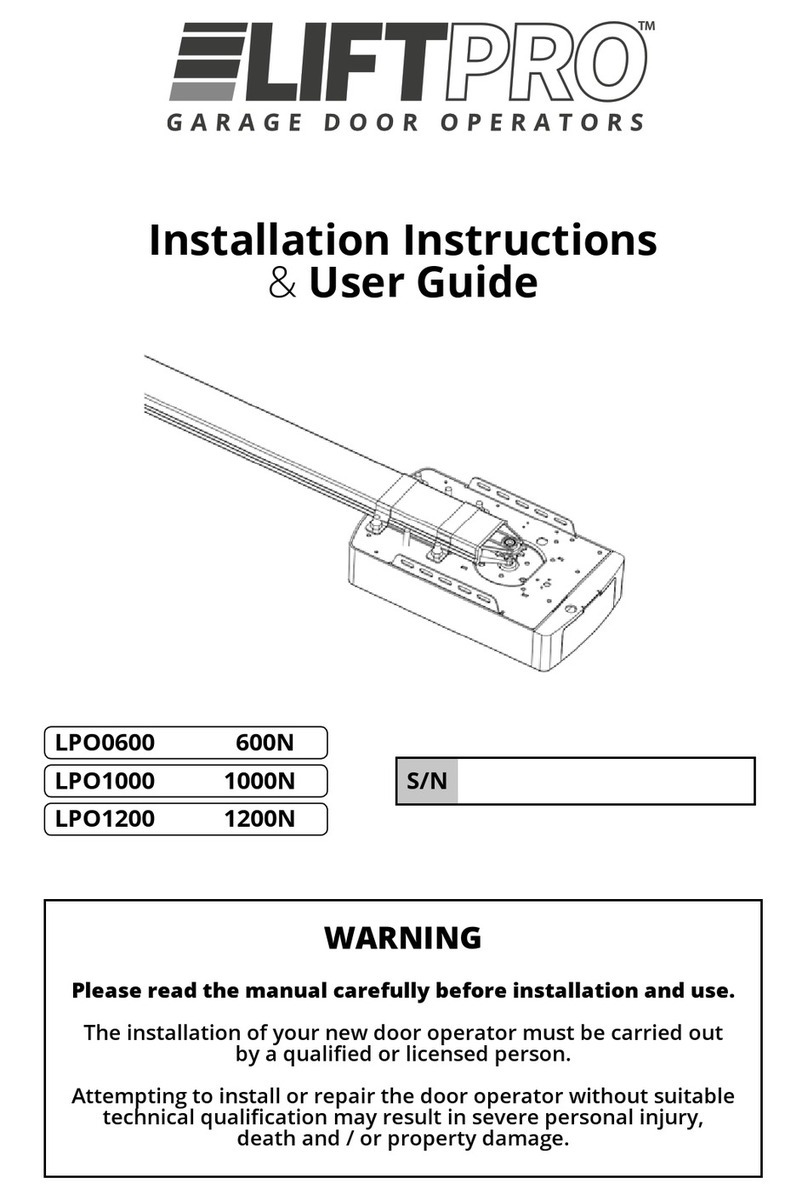
LIFTPRO
LIFTPRO LPO0600 Installation instructions & user guide
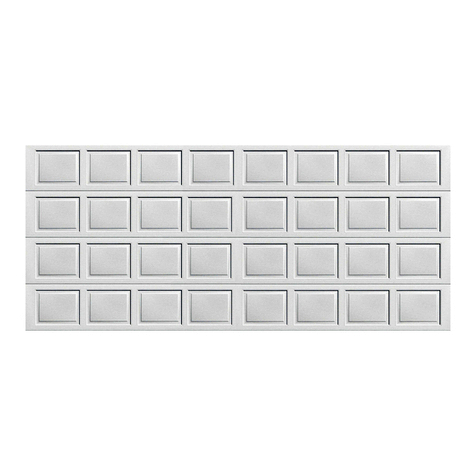
Wayne-Dalton
Wayne-Dalton 8000 Series Installation instructions and owner's manual

GFA
GFA KE 40.24-40,00 Ex installation instructions
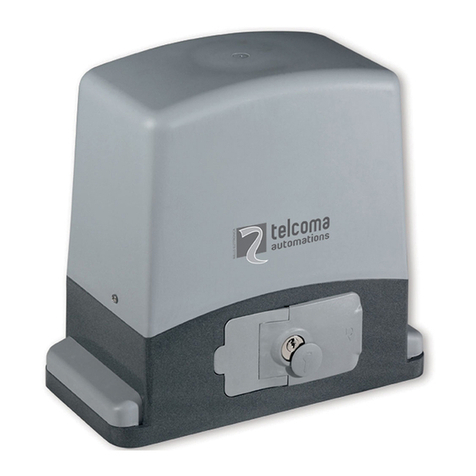
Telcoma Automations
Telcoma Automations ACE401 Operation and Programming Instructions
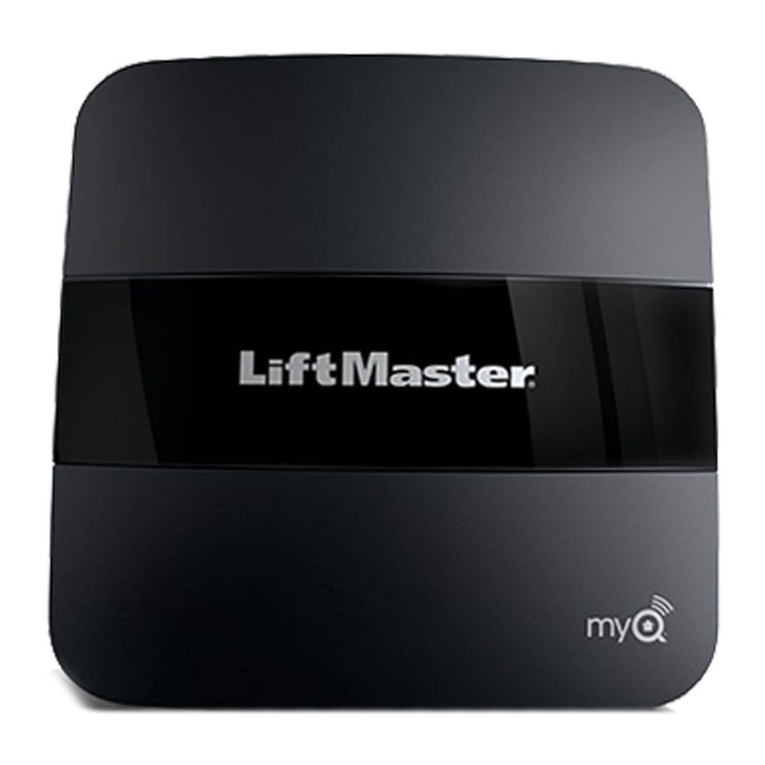
Chamberlain
Chamberlain MYQ-G0303-SP quick start guide
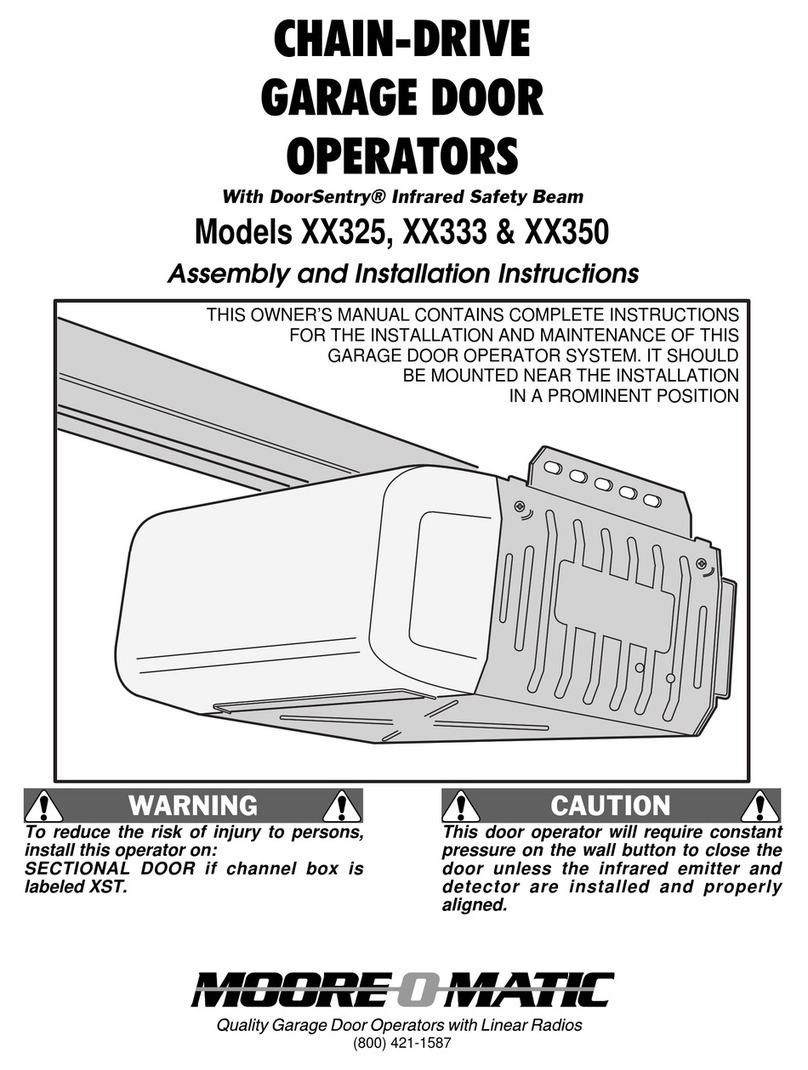
moore o matic
moore o matic XX325 Assembly and installation instructions

